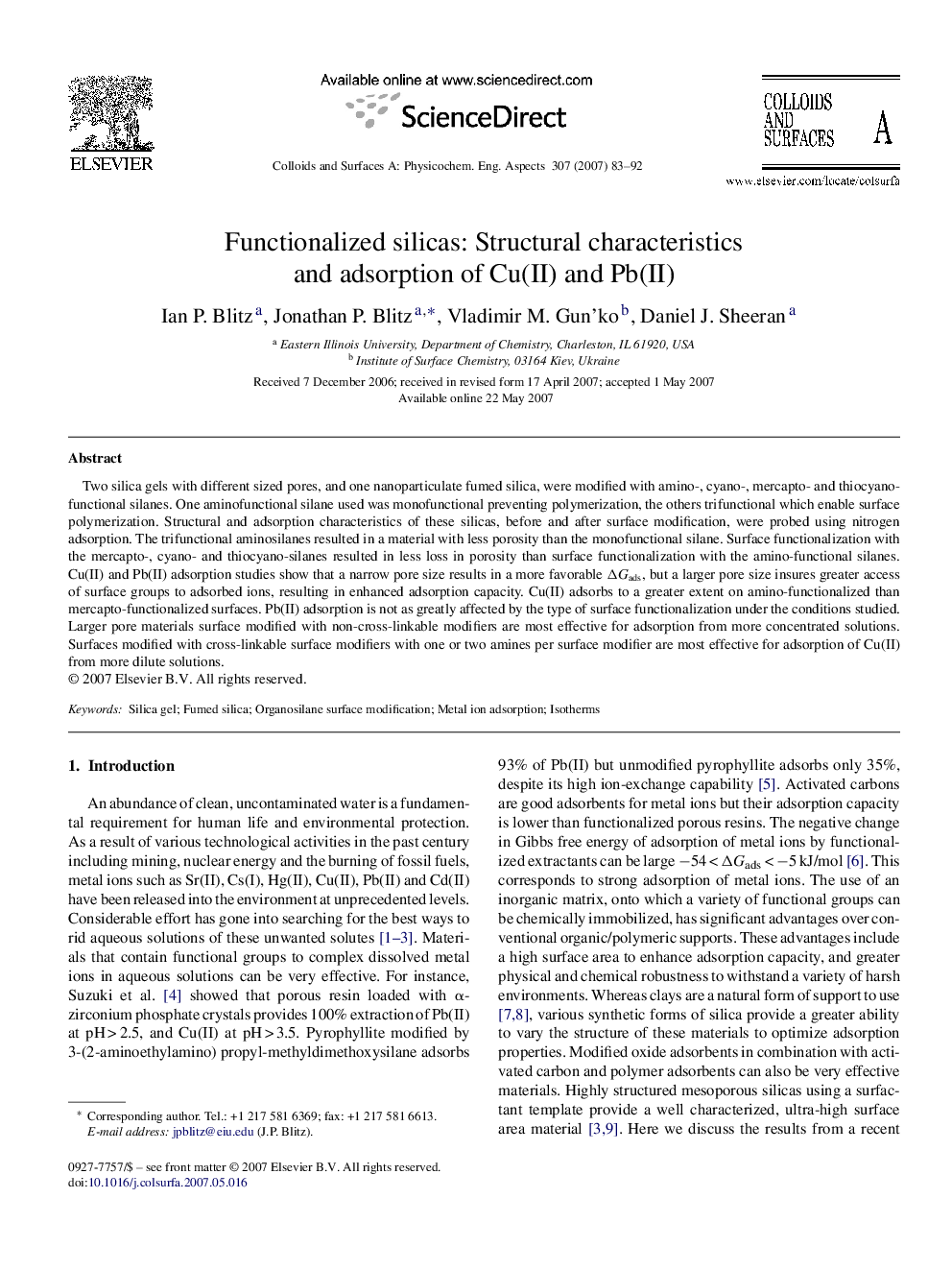| Article ID | Journal | Published Year | Pages | File Type |
|---|---|---|---|---|
| 597231 | Colloids and Surfaces A: Physicochemical and Engineering Aspects | 2007 | 10 Pages |
Two silica gels with different sized pores, and one nanoparticulate fumed silica, were modified with amino-, cyano-, mercapto- and thiocyano-functional silanes. One aminofunctional silane used was monofunctional preventing polymerization, the others trifunctional which enable surface polymerization. Structural and adsorption characteristics of these silicas, before and after surface modification, were probed using nitrogen adsorption. The trifunctional aminosilanes resulted in a material with less porosity than the monofunctional silane. Surface functionalization with the mercapto-, cyano- and thiocyano-silanes resulted in less loss in porosity than surface functionalization with the amino-functional silanes. Cu(II) and Pb(II) adsorption studies show that a narrow pore size results in a more favorable ΔGads, but a larger pore size insures greater access of surface groups to adsorbed ions, resulting in enhanced adsorption capacity. Cu(II) adsorbs to a greater extent on amino-functionalized than mercapto-functionalized surfaces. Pb(II) adsorption is not as greatly affected by the type of surface functionalization under the conditions studied. Larger pore materials surface modified with non-cross-linkable modifiers are most effective for adsorption from more concentrated solutions. Surfaces modified with cross-linkable surface modifiers with one or two amines per surface modifier are most effective for adsorption of Cu(II) from more dilute solutions.
